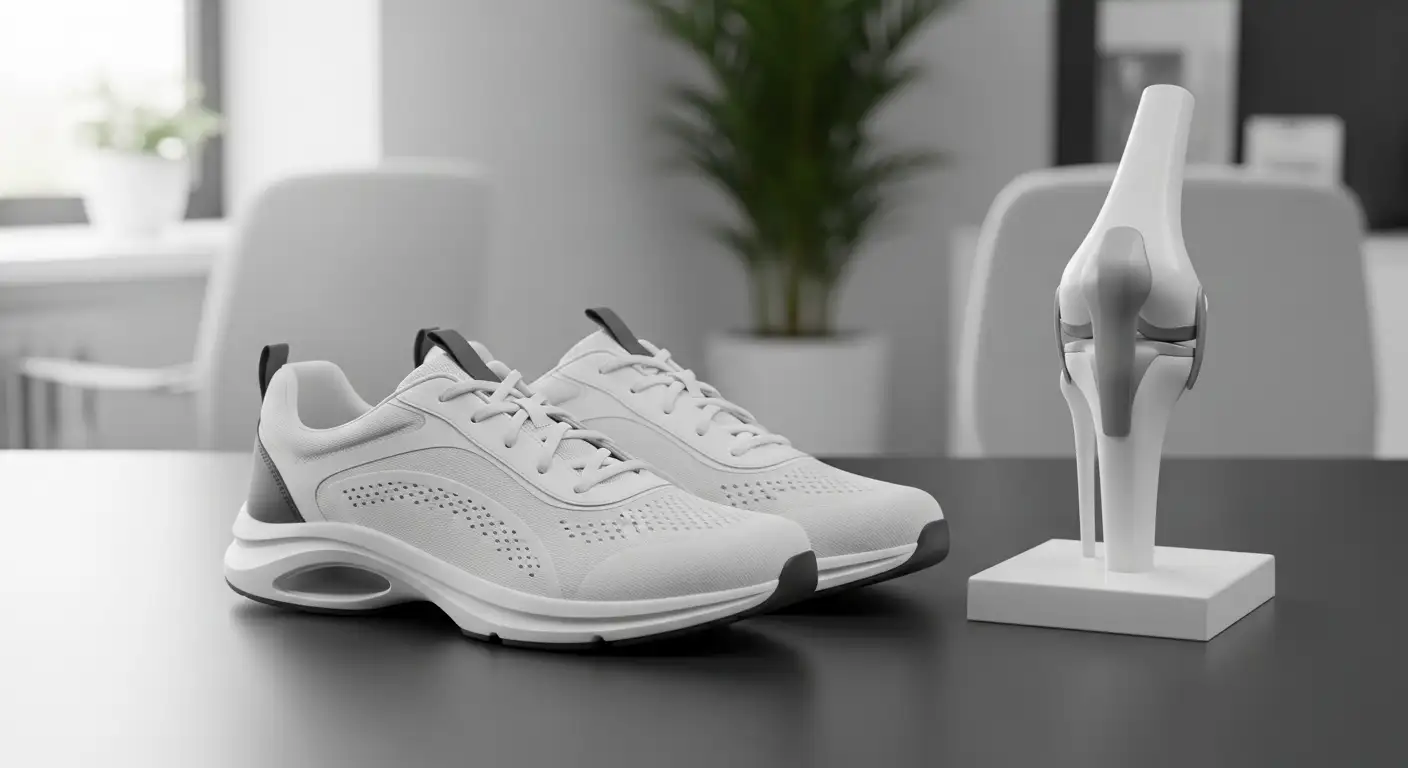Understanding Knee Pain and When to Seek Help
Knee pain can significantly impact daily life, causing discomfort, impairing mobility, and indicating underlying health issues. Whether you're experiencing occasional stiffness or persistent pain, understanding the severity and possible causes is essential. This article introduces a comprehensive knee pain quiz designed to help you self-assess, identify potential underlying conditions, and determine when it’s time to consult a healthcare professional.
Using a Self-Assessment Tool to Gauge Knee Health

What is a knee pain symptom checker?
A knee pain symptom checker is an online tool designed to help users evaluate their knee health by answering questions about their symptoms. Usually supervised by medical professionals, it allows individuals to identify potential causes of discomfort based on location, intensity, and additional symptoms like swelling or stability issues. These checkers are accessible on health websites, providing initial guidance without replacing professional advice.
How does the KOOS, JR. knee health quiz work?
The KOOS, JR. (Knee Injury and Osteoarthritis Outcome Score, joint replacement version) is a trusted questionnaire endorsed by both the American Academy of Orthopaedic Surgeons and the Centers for Medicare & Medicaid Services. It assesses the severity of pain, stiffness, and problems related to daily functional activities. Patients respond to questions about their knee, including if they experience pain when pressing on it, during movement, or at night.
This survey scores out of 100 points, with higher scores indicating better knee health. A lower score, especially one similar to those seen after knee replacements, suggests that a consultation with a specialist is needed to explore treatment options.
How can I interpret my quiz scores?
Scores obtained from the KOOS, JR. help determine the severity of knee issues:
- Scores near 100: Minimal or no symptoms, routine monitoring.
- Scores mid-range: Mild to moderate symptoms, consider lifestyle modifications or physical therapy.
- Scores below 70: Significant symptoms akin to post-surgical patients, consultation needed.
The quiz includes questions on pain during activities, stiffness, walking trouble, and sensation of instability. Based on your responses, the tool provides guidance on whether to seek further medical assessment or try conservative measures.
What are common mistakes that contribute to knee problems?
Avoiding movement and over-resting may seem protective but can worsen knee health. Regular, low-impact activity helps maintain joint strength and flexibility. Excess weight also raises stress on the knee joints, increasing risk for osteoarthritis. Ignoring persistent pain, engaging in high-impact or unregulated exercise, or neglecting proper footwear can accelerate damage. Preventative measures such as maintaining a healthy weight, wearing supportive shoes, and exercising moderately can help preserve knee function.
How can I diagnose knee pain at home?
Start by noting where and how your knee hurts—swelling, stiffness, or difficulty moving. Using online symptom checkers, like the NHS Wales knee injury tool, can guide you through the possible causes based on your symptoms. Managing pain with rest, ice, compression, elevation (RICE), or over-the-counter NSAIDs can provide relief. If pain persists, worsens, or if you experience inability to bear weight or deformity, seeking medical attention is crucial. Home diagnosis helps determine if your issue is minor or needs urgent care.
How can I check if my knee pain is serious?
Signs of serious knee problems include severe pain, swelling that looks like a balloon, inability to support weight, or deformity after injury. Popping sounds, instability, or an inability to straighten or bend the knee suggest ligament tears, fractures, or dislocations. Immediate medical intervention is necessary if these signs appear. Conversely, if the pain is milder and gradually improves, conservative care might suffice, but worsening symptoms should prompt a healthcare visit.
What might cause my knee to feel wrong or abnormal?
Feeling that your knee is 'off' can stem from injuries like ligament tears, meniscus damage, or fractures. Inflammation from arthritis, bursitis, or tendinitis can create swelling and stiffness. Mechanical issues such as loose bodies or patellofemoral pain syndrome, as well as infections or cysts, may also be involved. Certain noises such as popping or grinding, and symptoms like instability or weakness, often indicate underlying injury or condition. If severe pain, swelling, or deformity occurs, prompt evaluation is essential.
Are there resources to help identify the cause of knee pain?
Several online resources and symptom checkers assist in identifying potential causes of knee pain. Tools such as the NHS Wales knee injury checker or WebMD's Knee Pain Quiz guide users through symptom assessment to suggest next steps. While helpful for initial screening, they do not replace professional medical diagnosis. Severe or persistent symptoms should always be evaluated by a healthcare professional for accurate diagnosis and treatment.
What are common causes of knee pain for women?
Knee pain in women often arises from injuries like ligament tears and overuse conditions such as tendinitis. Hormonal fluctuations during menstrual cycles and menopause can affect joint health. Structural differences, like wider hips and inward-curving thighbones, increase stress on the knee, leading to conditions like patellofemoral pain syndrome. Autoimmune diseases such as rheumatoid arthritis, gout, and infections also contribute. Aging and previous injuries further raise the risk, making personalized assessment important.
What tools are available to understand knee anatomy and conditions?
To improve understanding of knee structure, educational resources include detailed diagrams, 3D models, and interactive tutorials showing bones, ligaments, muscles, and bursae. Medical imaging modalities like MRI and ultrasound are vital in diagnosing injuries. Physical therapy videos and exercises help comprehend how the knee works and aid in recovery. Combining these tools enhances knowledge, allowing better guidance for experiencing knee issues or understanding potential injuries.
These assessments and resources facilitate a better understanding of your knee health and when to seek professional care. Remember, while online tools are valuable, they complement but do not replace the advice of qualified healthcare providers.
Understanding Causes and Risk Factors of Knee Pain
 Knee pain can stem from a variety of causes, some benign and others more serious. Common issues include osteoarthritis, which leads to cartilage breakdown and joint inflammation, and rheumatoid arthritis, an autoimmune condition that causes joint deterioration. Gout and pseudogout are crystal-induced forms of arthritis that cause sudden, intense pain, often accompanied by swelling.
Knee pain can stem from a variety of causes, some benign and others more serious. Common issues include osteoarthritis, which leads to cartilage breakdown and joint inflammation, and rheumatoid arthritis, an autoimmune condition that causes joint deterioration. Gout and pseudogout are crystal-induced forms of arthritis that cause sudden, intense pain, often accompanied by swelling.
Injuries to the knee are also prevalent, such as ligament tears, meniscus damage, fractures, or dislocations. Mechanical problems like loose bodies or patellofemoral pain syndrome can cause discomfort and instability. Infections like septic arthritis pose serious health risks and require urgent treatment.
Certain serious diseases can involve knee symptoms as well. Septic arthritis, caused by bacterial infection in the joint, is a medical emergency. Decompression sickness, often related to rapid altitude changes or diving, may also affect the knee and demands prompt care.
Several risk factors influence the likelihood of knee pain. Age is significant; degenerative conditions become more common as people get older. Excess weight adds stress to the knee joints, increasing damage risk. High activity levels, especially repetitive motions or high-impact sports, can lead to injuries or wear and tear. Gender plays a role, with women more prone to conditions like osteoarthritis.
What might cause my knee to feel wrong or abnormal?
Knee feelings of abnormality can result from injuries such as ligament tears, meniscus damage, fractures, or dislocations. Inflammatory conditions like arthritis, bursitis, or tendinitis may also contribute. Mechanical issues, including loose bodies or problems with the kneecap alignment, can cause discomfort. Symptoms to watch for include swelling, redness, warmth, weakness, instability, and unusual noises like popping or crunching. If experiencing severe pain, swelling, deformity, or limited movement, consulting a healthcare professional is crucial for accurate diagnosis and appropriate treatment.
Are there resources to help identify the cause of knee pain?
Indeed, various online tools are available to assist in identifying the potential cause of knee pain. Symptom checkers like the NHS Wales knee injury symptom checker guide users through questions about their symptoms to assess injury likelihood or specific conditions. These resources can provide initial guidance and indicate whether medical attention is needed.
However, it's important to understand that such tools are not substitutes for professional medical diagnosis. Persistent, severe, or worsening symptoms, or signs of infection or injury, should prompt consultation with a healthcare provider. A doctor can perform detailed examinations and tests to determine the exact cause of knee pain and recommend effective treatment options.
Common causes of knee pain including osteoarthritis, rheumatoid arthritis, gout, and injuries
| Cause | Description | Typical Symptoms | Risk Factors |
|---|---|---|---|
| Osteoarthritis | Degeneration of joint cartilage, leading to pain and stiffness | Aching, stiffness, reduced movement | Aging, excess weight |
| Rheumatoid arthritis | Autoimmune inflammation damaging joint lining | Swelling, redness, warmth, joint deformity | Family history, female gender |
| Gout/Pseudogout | Crystal deposits causing sudden, severe pain | Intense joint pain, swelling, redness | Dietary factors, obesity |
| Injuries | Ligament tears, meniscus damage, fractures, dislocations | Pain, swelling, instability, difficulty moving | Overuse, sports, accidents |
Serious diseases related to knee pain
| Disease | Nature of Condition | Symptoms | Urgency |
|---|---|---|---|
| Septic arthritis | Joint infection caused by bacteria | Severe pain, swelling, fever, redness | Emergency |
| Decompression sickness | Gas bubbles forming due to pressure changes | Joint pain, dizziness, difficulty breathing | Immediate medical attention |
Understanding these causes and risk factors can help in early diagnosis and effective management of knee pain. Always consult healthcare professionals for appropriate assessment and treatment tailored to individual needs.
Severity and Impact of Knee Pain: How to Use the KOOS, JR. Quiz
 The KOOS, JR. (Knee injury and Osteoarthritis Outcome Score, Jr.) is a trusted questionnaire designed to evaluate knee health and is endorsed by prominent medical organizations including the American Academy of Orthopaedic Surgeons (AAOS) and the Centers for Medicare & Medicaid Services (CMS). This short, surgeon-approved quiz helps patients assess the severity of their knee symptoms by asking about pain, stiffness, and difficulties in daily activities. Its results can be an important guide in discussions with healthcare providers about potential diagnoses and treatment options.
The KOOS, JR. (Knee injury and Osteoarthritis Outcome Score, Jr.) is a trusted questionnaire designed to evaluate knee health and is endorsed by prominent medical organizations including the American Academy of Orthopaedic Surgeons (AAOS) and the Centers for Medicare & Medicaid Services (CMS). This short, surgeon-approved quiz helps patients assess the severity of their knee symptoms by asking about pain, stiffness, and difficulties in daily activities. Its results can be an important guide in discussions with healthcare providers about potential diagnoses and treatment options.
The KOOS, JR. score ranges from 0 to 100, with higher scores indicating better knee health and fewer symptoms. Patients answer questions related to how severe their pain is during different activities, whether they experience stiffness, and if knee issues interfere with their daily routines. Specific questions include whether they have trouble walking, experience knee pain during activities, or suffer from night pain or instability.
The score reflects the level of severity of symptoms:
| Score Range | Severity Level | Description | Suggested Action |
|---|---|---|---|
| 0-49 | Severe to very severe | Significant pain, stiffness, and activity limitation | Consider seeking immediate medical evaluation; possible interventions or surgical consultation |
| 50-69 | Moderate | Noticeable symptoms affecting daily life | Schedule a consultation for further assessment |
| 70-89 | Mild to moderate | Mild discomfort; some impact on activities | Discuss symptoms with a healthcare provider |
| 90-100 | Minimal or no issues | Little to no impact; mostly healthy knee | Continue regular activity; routine check-ups as needed |
A score similar to those of patients who have undergone knee replacement surgery signals a need for professional evaluation to explore treatment options. Conversely, higher scores suggest that current management strategies might be sufficient.
It's important to remember that this quiz serves as a helpful initial screening tool but does not replace professional medical advice. Persistent, worsening, or severe symptoms such as swelling, inability to bear weight, deformity, or severe pain should prompt an immediate visit to a healthcare professional.
Using tools like the KOOS, JR. can empower patients to better understand their knee health and identify when it’s time to seek medical help. With proper assessment and early intervention, many knee issues can be effectively managed or treated before they become more serious.
Empowering Your Knee Health Journey
Self-assessment tools like the KOOS, JR. quiz serve as valuable resources to understand the severity of your knee pain and to facilitate meaningful conversations with healthcare providers. Remember, these tools are designed to assist, not replace, professional medical diagnosis and treatment planning. If your responses indicate significant issues or if you experience worsening symptoms, seeking prompt medical evaluation is crucial. Maintaining good knee health involves regular activity, weight management, and mindfulness of injury prevention. By staying informed and proactive, you can better manage knee pain and preserve mobility and quality of life.
References
- Knee Pain Symptom Checker - Free 3-Min Quiz Identifies Causes
- Knee Health Quiz - The Personalized Knee® by Zimmer Biomet
- WebMD Knee Pain Quiz Central
- McLaren Health Care Joint Pain Assessment Quiz
- Knee pain - Symptoms and causes - Mayo Clinic
- Knee Pain and Problems | Johns Hopkins Medicine
- Knee pain Information | Mount Sinai - New York





